Written by Taylor Neal.
Quite often, when anything doesn’t work the way we want it to in relation to sex and our bodies, the first response we feel is an enormous amount of shame.
Whether it’s with a partner, solo, or even with a doctor, if there’s something we feel is unusual going on with our sexual body; our genitals and our ability to have the sex we feel we should be able to have, we immediately feel as though we are broken, in a different way than we do with any other part of our body.
If we sprain an ankle or pull a muscle, we’re rarely embarrassed to let people know, and it usually doesn’t end up impacting our sense of self worth. If we can’t get wet however, it’s a whole other story, and it’s often met with a lot of self-judgment and/or frustration.
Just like the rest of our bodies, our sexual bodies respond to conditions, experiences, and factors both inside of us and outside of us, in a physical way. Sometimes, we are born with a certain condition or proneness that we must learn to navigate around and live with. Other times, we develop conditions based on our lived experiences, environments, and many other factors.
Sometimes, the body simply says no to the things we ask of it. The problem is, we’re not conditioned to believe that “no” is a complete sentence. We’re not taught how to allow ourselves a “no.”
For people with vulvas, it is extremely common to experience pain during vaginal penetration, whether it be during penetrative sex, using a tampon or menstrual cup, using a finger, receiving a PAP test, or any other form of penetration. While there are lots of reasons why pain during penetration could be situational, and therefore not necessarily a condition, there are also many reasons why penetration can be painful on a consistent basis for vulva-bearing humans.
One of the most common conditions causing difficulty around penetration of any kind is called Vaginismus, and though it is a shared experience amongst many people with vulvas (approximately one in two vulva-bearing people will experience vaginismus), it is rarely discussed openly, and therefore very rarely understood. This causes the experience of vaginismus to often feel extremely isolating, circling back to that debilitating “I’m broken” thought pattern.
When the vulva says no, especially when the rest of the body says yes, it can be an exceptionally difficult “no” to receive because, as though our vulvas are our misbehaved children, we feel we need to take responsibility for their stubbornness.
Just like with a child, the best way we can begin to move toward a more harmonious, connected relationship, is to do the work to try and understand where the “no” may be coming from.
We have to nurture and befriend our vulvas and their pain, before we can begin to heal.
What is Vaginismus?
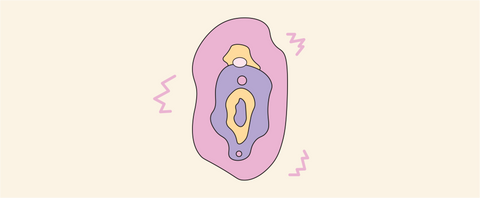
Vaginismus is an involuntary contracting, or tensing, of the musculature of the vagina, which causes pain during some or all forms of vaginal penetration. Most commonly, vaginismus is rooted in a deeper, psychological matter, which, either consciously or subconsciously, causes a fear of penetration. The body then uses vaginismus as a physical way of protecting itself.
If you think of the vagina like any other muscle, when threatened, it tenses up.
If you hate getting needles, your first instinct may be to tense up your arm or clench your fist in anticipation of the pain when getting a needle at the doctor. If you’re always stressed, you may carry a lot of tension in your neck or shoulders, which will result in stiffness.
Vaginismus is the vagina’s equivalent to walking around all day, everyday, with your shoulders scrunched up by your ears. If you do this for long enough, it becomes part of your reality, and it will become increasingly difficult to relax those muscles.
While there are many cases in which vaginismus is present from one’s first experience of penetration (using a tampon, a finger, a penis, or any other form of penetration) without clear cause, there are also many cases in which vaginismus is linked to a more complex psychological affection. It can develop at any stage in life, at any stage along one’s sexual journey.
It is also quite common for folks who have experienced pleasurable penetration in their life prior, to develop vaginismus. Many factors can come into play throughout one’s life that cause our sexual body and experience of sensation to fluctuate.
The first step in nurturing and befriending your vulva in the experience of vaginismus, is to recognize your fluctuating, fluid nature as a sexual being, and let that “no” feel heard.
This is not to say that you are doomed to painful penetration for the rest of your life. It can be something you wish to heal, and there are many ways to begin working toward healing, but that first step always has to be the acceptance and welcoming of the “no” in order to move forward.
When the Pussy Says No
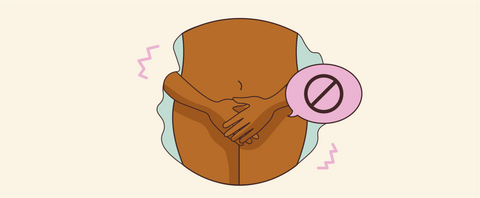
Like with mental stress, the psychological experience manifests in physical tension in the body.
Where there has been stress that directly relates to intimacy, sex and penetration, such as sexual and/or physical abuse, trauma around sex and intimacy, anxiety, depression, and many other mental health experiences and social conditionings that may colour our relationship to our vulvas, this mental and emotional tension can then manifest in physical tension in our vaginal muscles. This tension can cause some or all penetration to be so painful that it is simply inaccessible. Vaginismus is also quite common after childbirth.
In many cases, especially in the case of sexual trauma, the experience of vaginismus is quite literally our body trying to protect us.
This can be extremely difficult to navigate however, if we are seeking to engage in penetrative sex, either with ourselves, or with our partner(s). It can also deeply impact our relationship to our vulvas, and to pleasure as a whole, outside of any sexual context.
Tension builds when there is a lack of felt safety, and lack of safety comes with lack of connection and understanding, so in order to start releasing the tension, we have to gently guide our bodies back to a place where they feel safe to begin the vulnerable journey of healing.
In the same way that the rest of our bodies respond to pain and sometimes need extra care; our necks and shoulders get tense after sitting at a desk all day, jaw pain will come if we clench our teeth, we will bruise if hit with a baseball, our vulvas are extremely complex, deeply nervous parts of us, and sometimes need extra care, or treatment, in order to function in the way they want to.
If the body has put up a physical boundary such as vaginismus, which prevents us from participating in safe, consensual, pleasure-based actions, then we have to nurture the body as we would a scared child, to let it know that it is safe and that we are here to support it however it needs.
It must also be said that there are plenty of ways to have sex without penetration, and that vaginismus doesn’t necessarily impact our ability to experience arousal or orgasm.
For some, vaginismus may be accompanied by lower libido or lack of sexual desire, numbness, vulvodynia, and other factors, that deter the person from wanting to engage in sex.
There are many people however, who experience vaginismus and also experience sexual desire, and are able to find pleasure through clitoral stimulation, anal stimulation, and other forms of sex. To experience vaginismus is not to say that sex is over, far from it. Penetration is not necessary for a healthy sex life.
If you are seeking to treat vaginismus however, there are many routes you can take.
As vaginismus is often a psychological condition rather than a purely physical one, it can be treated with a combination of physical and psychological therapies.
Healing
As the experience of vaginismus is deeply nuanced and unique to each person, the healing journey will be equally nuanced and unique.
Unfortunately there is no “one size fits all” cure to vaginismus, and it may take some patience and multiple approaches before healing starts to feel within reach. There are, however, a couple of starting points and tools that can be useful to begin with.
The list does not stop with these couple of tips however, there will be many different routes to healing for each person.
Seek Sex Therapy
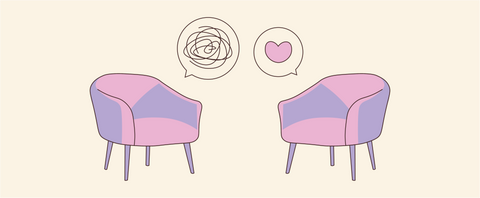
One of the best ways to start understanding your sexual body and wellness better is to seek professional support from a qualified sex therapist. As previously mentioned, often vaginismus is rooted in a psychological cause rather than a purely physical condition.
Working with a sex therapist can help get to the root cause of the fear and tension living in the sexual body that is preventing easeful penetration. Therapists specifically qualified in the field of sex therapy will be most suited for working with sexual trauma.
From here, you can begin to explore physical therapeutic tools.
Sexological Bodywork
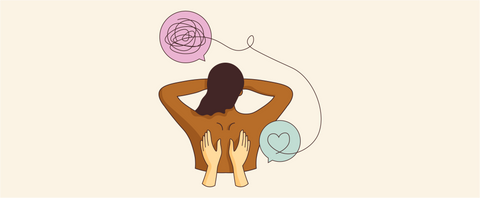
Sexological Bodywork is a field of sex therapy as well as physical therapy, which specifically focuses on healing the sexual body through embodiment practices, somatics, genital/internal massage, talk therapy, and more.
Often, sexological bodywork allows healing to occur on both physical and psychological levels. A sexological bodyworker is professionally trained in offering genital massage to help with reconnecting to the body after trauma and/or pain. The benefit to working with a sexological bodyworker is that they are able to support you through the full spectrum of sexual healing, both hands on and off.
This is a wonderful way to start slowly working on releasing the tension in the vagina, in the same way as you would get a massage for back and shoulder pain.
Self-Touch
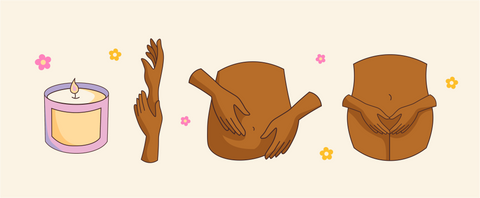
The best way to begin navigating toward building safety for relaxation in your body, is to start within the safety of your own company, and your own hands.
Without this necessarily having to be about masturbation, find yourself some yummy oils, light a candle, play some music, and just spend some time touching your body. You can start on your shoulders, your neck, your arms, and work your way down to your tummy, your legs, your inner thighs, and then see how it feels to touch your body slowly, without any pressure for penetration.
Try to take long, slow, deep breaths, and picture the breath traveling down into your womb as you massage yourself.
See how things develop, notice how/if you soften in your own care, and then perhaps start experimenting with your own fingers. Be patient, take your time, and see if you can try to touch yourself internally like you’re giving yourself a massage. Use your fingers to gently press into the vaginal walls the way you’d rub your neck if it was tense.
Vaginal Dilation

If you’ve already begun your journey with healing vaginismus, and you’re looking for something to try at home, you could look into vaginal dilation therapy. This is a series of insertable wands which increase in size, designed to aid in relaxing the vaginal walls and decrease pain.
Vaginal dilation kits are available in many sexual health and wellness shops. I would recommend consulting a sex therapist, or discussing the process with a professional before use.
I will also say here, that lube is your friend! Use lots of it! Especially if you’re trying this out at home alone, lube will make things much more accessible.
You can also work on vaginal dilation with a sexological bodyworker.
Yoni Steam

Another great way to begin to soften the vaginal walls is to Yoni Steam.
Yoni steaming is an ancient practice of diffusing herbal medicine in the form of steam underneath the vulva, so the steam from the medicinal herbs cleanses and treats the yoni.
Herbs such as chamomile, calendula, rosemary, motherwort, mugwort, lavender, and lots more, are used to help with vaginal health and cleansing.
You can find lots of information on how to set up a yoni steam for yourself online.
~~~
Vaginismus does not mean you're broken, and there are many ways to begin regaining your body’s sense of safety and trust. When your yoni says no, remind your body that it is safe in your care, nurture it as you would a scared child, and thank it for protecting you.
We are safe, body, we will heal together.
~~~
Sources:Fadul, R., Garcia, R., Zapata-Boluda, R., Aranda-Pastor, C., Brotto, L., Parron-Carreño, T., & Alarcon-Rodriguez, R. (2018). (rep.). Psychosocial correlates of vaginismus diagnosis: A case-control study. (pp. 1–23). Vancouver, BC: UBC Sexual Health Research.
Ibid.
MATE, D. G. (2019). When The Body Says No: Exploring the Stress-Disease Connection. VERMILION.






